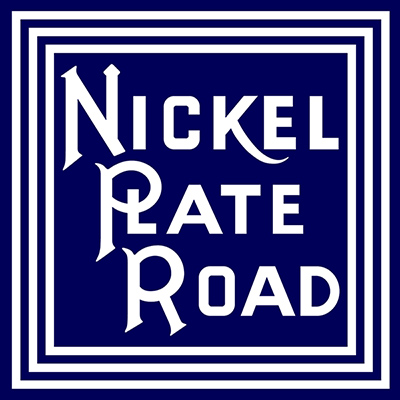ABOUT THE MUSEUM
Located just south of downtown Bellevue on a historic plot of land is a wealth of local history which is well preserved and presented at the Mad River & NKP Railroad Society Museum. The Mad River and NKP Railroad Society Inc. (incorporated in Ohio as a 501(c)(3) non-profit organization was founded in 1972 by Mr. Jean Leonard, a local pharmacist and railroad historian of Bellevue, Ohio. In 1976, the museum was opened as a lasting bicentennial project. Starting with one wooden caboose and vision, a fledgling group of railroad enthusiasts began building a museum that has spanned four decades and grown to become a nationally known and respected institution.
The group’s name honors the Mad River and Lake Erie Railroad, the first railroad chartered in Ohio, and the Nickel Plate Road (New York, Chicago & St. Louis Railroad Company), which is the local railroad that placed Bellevue on the map in the late 1880s. “NKP” is the American Association of Railroads reporting mark for the Nickel Plate Road which ran through Bellevue from 1882 until 1964 when it merged with the Norfolk & Western Railway. Bellevue housed the largest classification terminal on the system, all maintenance of way equipment for the road, the principal icing station, an engine terminal for both diesel and steam, headquarters of the general superintendent, and facilities that were used by four of the Nickel Plate’s divisions. The Nickel Plate System is now part of Norfolk Southern and still serves a vital role in the rail transportation network of the Midwest.
The site the museum was built on is the former location of Henry Flagler’s mansion. Flagler was one of the major investors of the Standard Oil Company and he then went on to develop Florida by building the Florida East Coast Railroad which opened the area for tourist travelers.
The museum collection includes locomotives both steam and diesel, freight and passenger cars, cabooses, and unique items such as a “V” blade snowplow, an operational 200-ton wrecker, and the first dome passenger car built in the United States the Silver Dome. Many of the cars contain displays that interpret various aspects of railroad history. The museum also sports a restored depot, watchman’s tower, and Section House.
Making this museum collection unique is the fact that you can climb into the locomotive cabs, sit in the Engineer’s seat, or step into the cabooses and see how the early Conductors worked and lived when on the road. A passenger coach, sleeper car, dome, and dining car portray passenger travel in the late 1940s-50s era before the automobile became the preferred travel mode and took the passengers away from the rails.
There are artifacts to interest everyone visiting, from old paper documents regarding the operations of trains, to the china and silver settings used on the luxury passenger cars, to track maintenance tools, and how communication has developed from early lamps and hand signals to modern radio communications between crews and dispatchers.
The museum has a newly rebuilt three-track coach yard for storage of museum and privately-owned rail equipment, a former Lake Shore & Michigan Southern Railroad freight house which now serves as the Society’s offices, the Mary Cooper Restoration Building that serves as the Museum’s shop complex, and the Monument Station that was formerly a cemetery monument cutting plant which now houses a large collection of displays including two cabooses and a full-size replica of the “Sandusky”, the first locomotive owned by the Mad River and Lake Erie railroad which linked Sandusky and Bellevue. Also in the Monument Station is the Trackside Gift shop, an extensive array of railroad-themed clothing, books, videos, pins, mugs, patches, and many other items to satisfy any visitor.
The Mad River and NKP Railroad Society is an educational institution and in fulfilling this mission, the museum conducts many school-tour field trips as well as conducts courses for earning the railroad merit badge for the Boy Scouts of America. The museum is also a major supporter of the nationally known Operation Lifesaver Grade Crossing Safety Educational Program.
The Mad River & NKP Railroad Museum is completely self-sustaining and does not receive government funding to operate. Financial support is received by admissions to the museum, generous donations, and fund-raising events held throughout the year. Events include our annual Car Show on Labor Day weekend, the Holiday Train just after Thanksgiving, and the Dinner in the Diner events. Special events are announced and promoted on our website and Facebook Page.
In 2012 the Mad River & NKP Railroad Society received the generous donation of all the former land of the Bellevue Farmers’ Cooperative grain elevator. Sunrise Cooperative, the last owner of the property had cleared it of the metal grain bins leaving only the two iconic red and white checkerboard painted concrete silos on the Gardner Street parcel. This property gives the museum much room for expansion and a metal office building to be used for the archival collection and research facility. Also donated were parcels owned by Stephen Kemper, one being the former Kemper Iron and Metal business property on Monroe Street. This area has been developed into the Kemper Rail Park, a raised concrete platform equipped with benches and trash receptacles for rail enthusiasts to spend time and watch the trains coming and going in all four directions.

